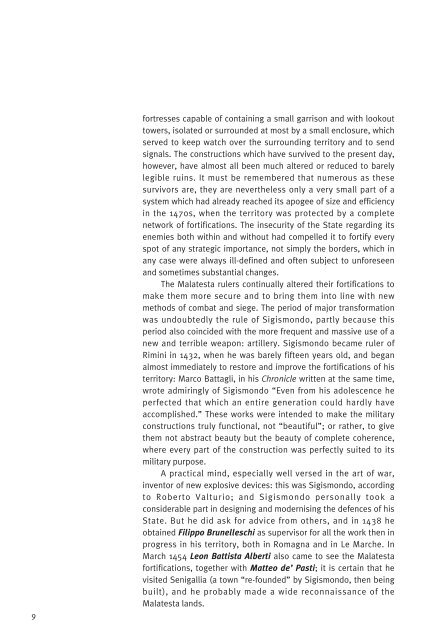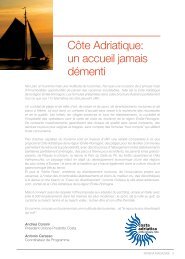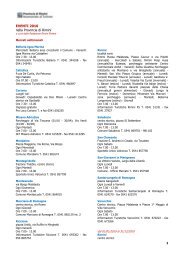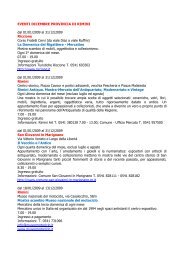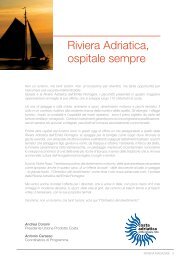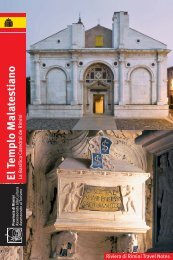Malatesta fortresses and castles
Malatesta fortresses and castles
Malatesta fortresses and castles
- No tags were found...
You also want an ePaper? Increase the reach of your titles
YUMPU automatically turns print PDFs into web optimized ePapers that Google loves.
9<strong>fortresses</strong> capable of containing a small garrison <strong>and</strong> with lookouttowers, isolated or surrounded at most by a small enclosure, whichserved to keep watch over the surrounding territory <strong>and</strong> to sendsignals. The constructions which have survived to the present day,however, have almost all been much altered or reduced to barelylegible ruins. It must be remembered that numerous as thesesurvivors are, they are nevertheless only a very small part of asystem which had already reached its apogee of size <strong>and</strong> efficiencyin the 1470s, when the territory was protected by a completenetwork of fortifications. The insecurity of the State regarding itsenemies both within <strong>and</strong> without had compelled it to fortify everyspot of any strategic importance, not simply the borders, which inany case were always ill-defined <strong>and</strong> often subject to unforeseen<strong>and</strong> sometimes substantial changes.The <strong>Malatesta</strong> rulers continually altered their fortifications tomake them more secure <strong>and</strong> to bring them into line with newmethods of combat <strong>and</strong> siege. The period of major transformationwas undoubtedly the rule of Sigismondo, partly because thisperiod also coincided with the more frequent <strong>and</strong> massive use of anew <strong>and</strong> terrible weapon: artillery. Sigismondo became ruler ofRimini in 1432, when he was barely fifteen years old, <strong>and</strong> beganalmost immediately to restore <strong>and</strong> improve the fortifications of histerritory: Marco Battagli, in his Chronicle written at the same time,wrote admiringly of Sigismondo “Even from his adolescence heperfected that which an entire generation could hardly haveaccomplished.” These works were intended to make the militaryconstructions truly functional, not “beautiful”; or rather, to givethem not abstract beauty but the beauty of complete coherence,where every part of the construction was perfectly suited to itsmilitary purpose.A practical mind, especially well versed in the art of war,inventor of new explosive devices: this was Sigismondo, accordingto Roberto Valturio; <strong>and</strong> Sigismondo personally took aconsiderable part in designing <strong>and</strong> modernising the defences of hisState. But he did ask for advice from others, <strong>and</strong> in 1438 heobtained Filippo Brunelleschi as supervisor for all the work then inprogress in his territory, both in Romagna <strong>and</strong> in Le Marche. InMarch 1454 Leon Battista Alberti also came to see the <strong>Malatesta</strong>fortifications, together with Matteo de’ Pasti; it is certain that hevisited Senigallia (a town “re-founded” by Sigismondo, then beingbuilt), <strong>and</strong> he probably made a wide reconnaissance of the<strong>Malatesta</strong> l<strong>and</strong>s.


